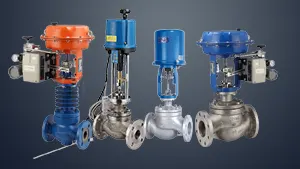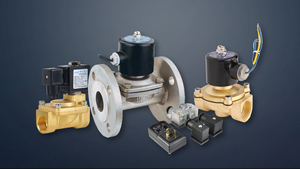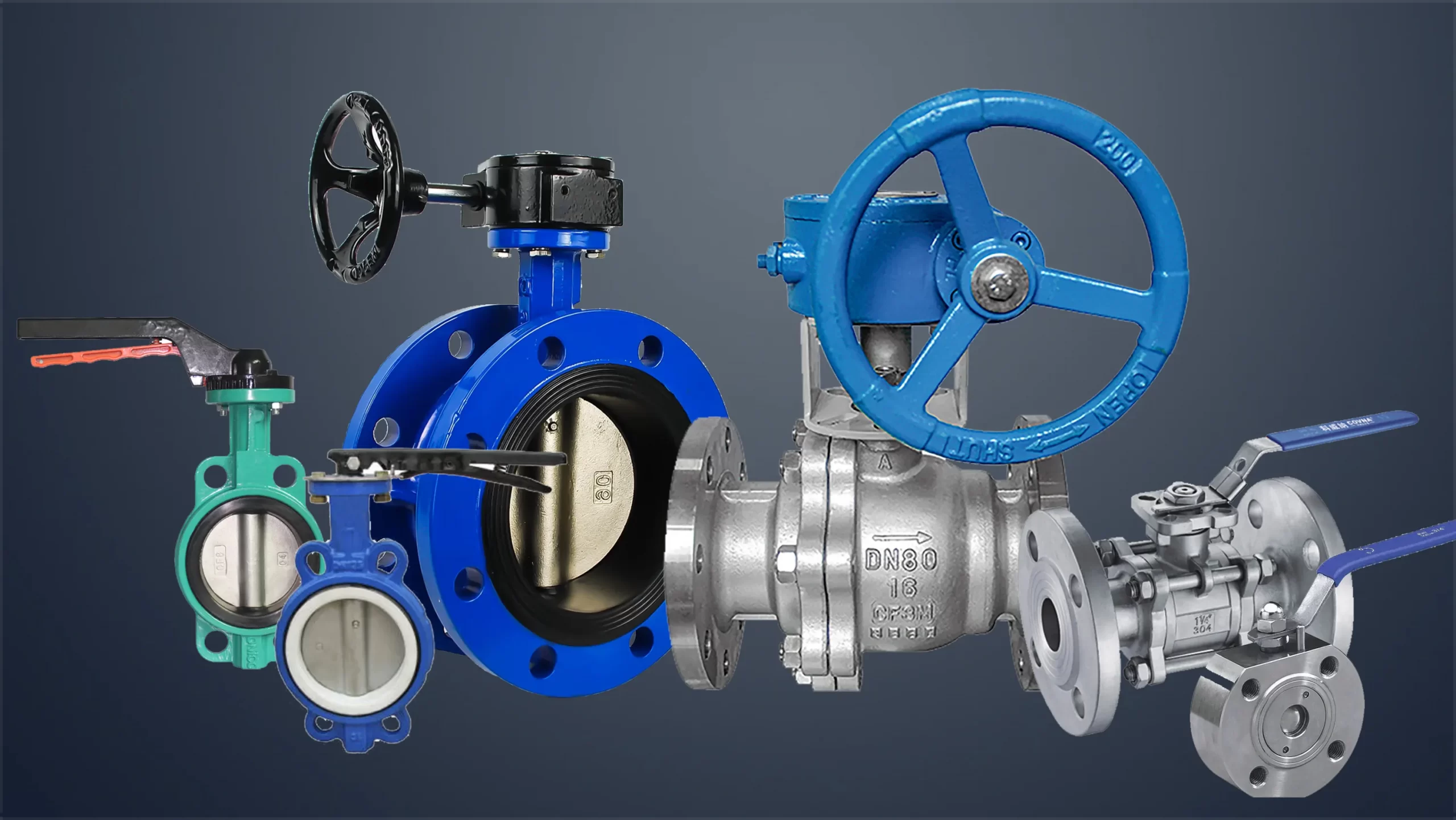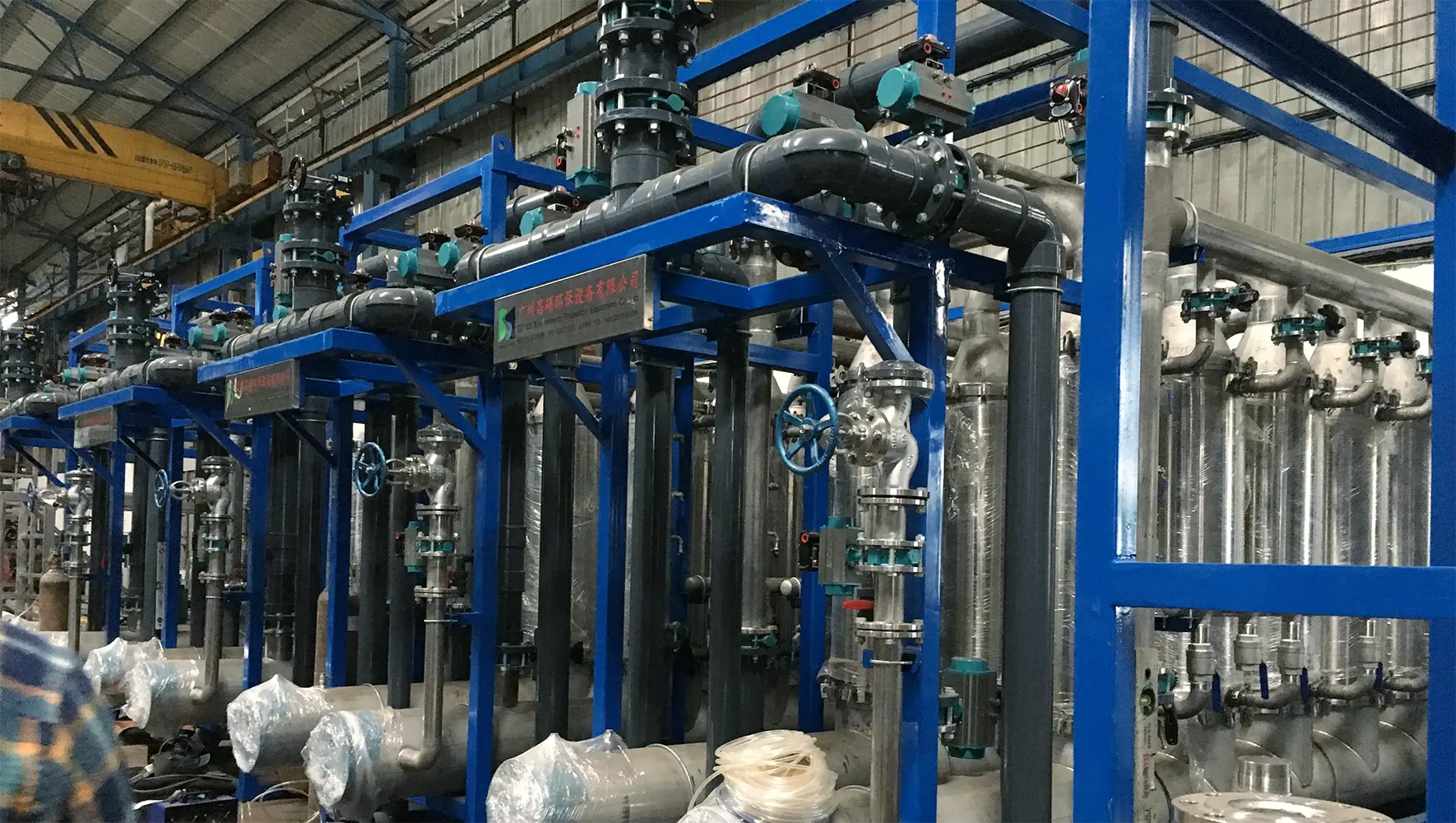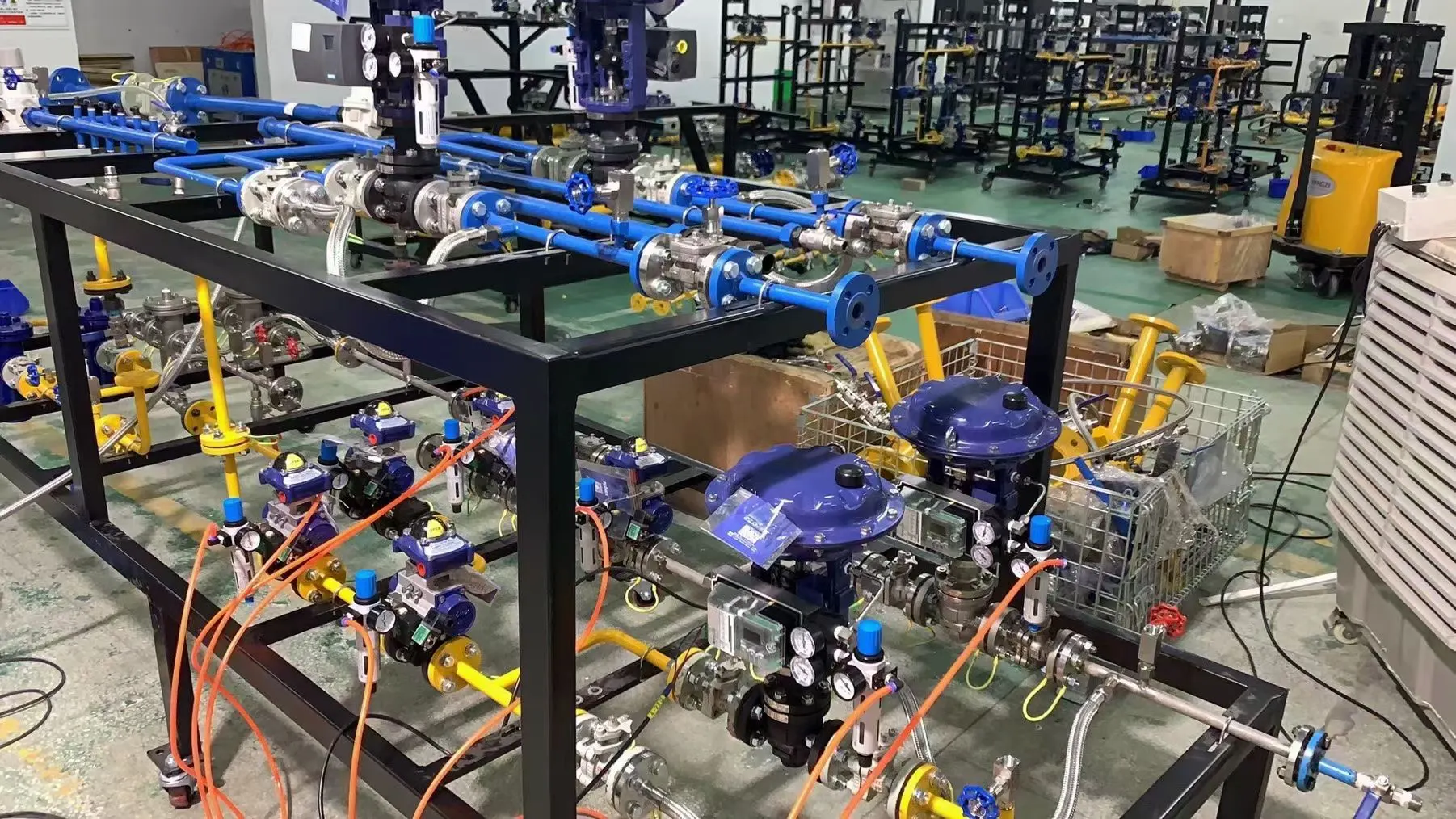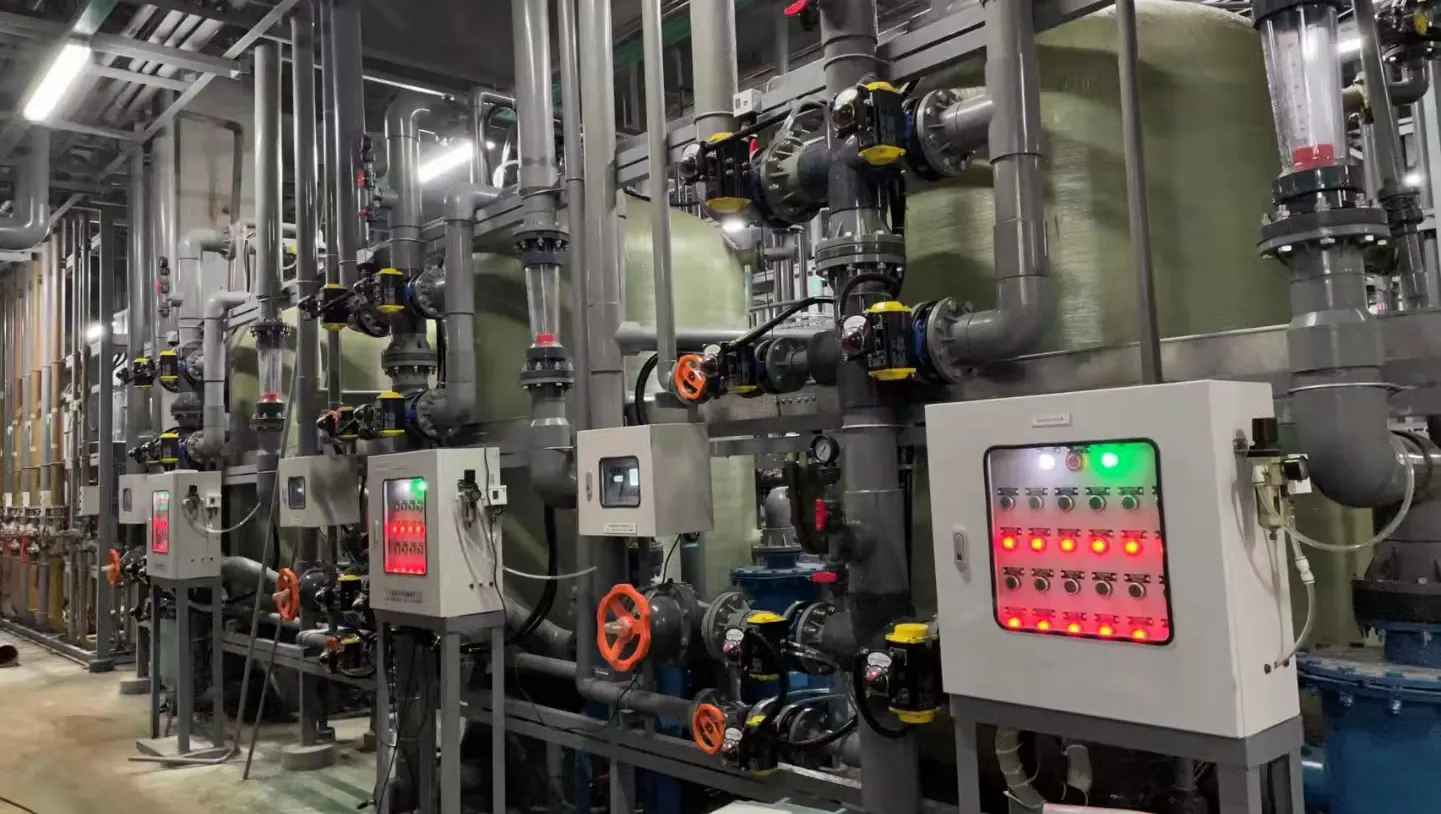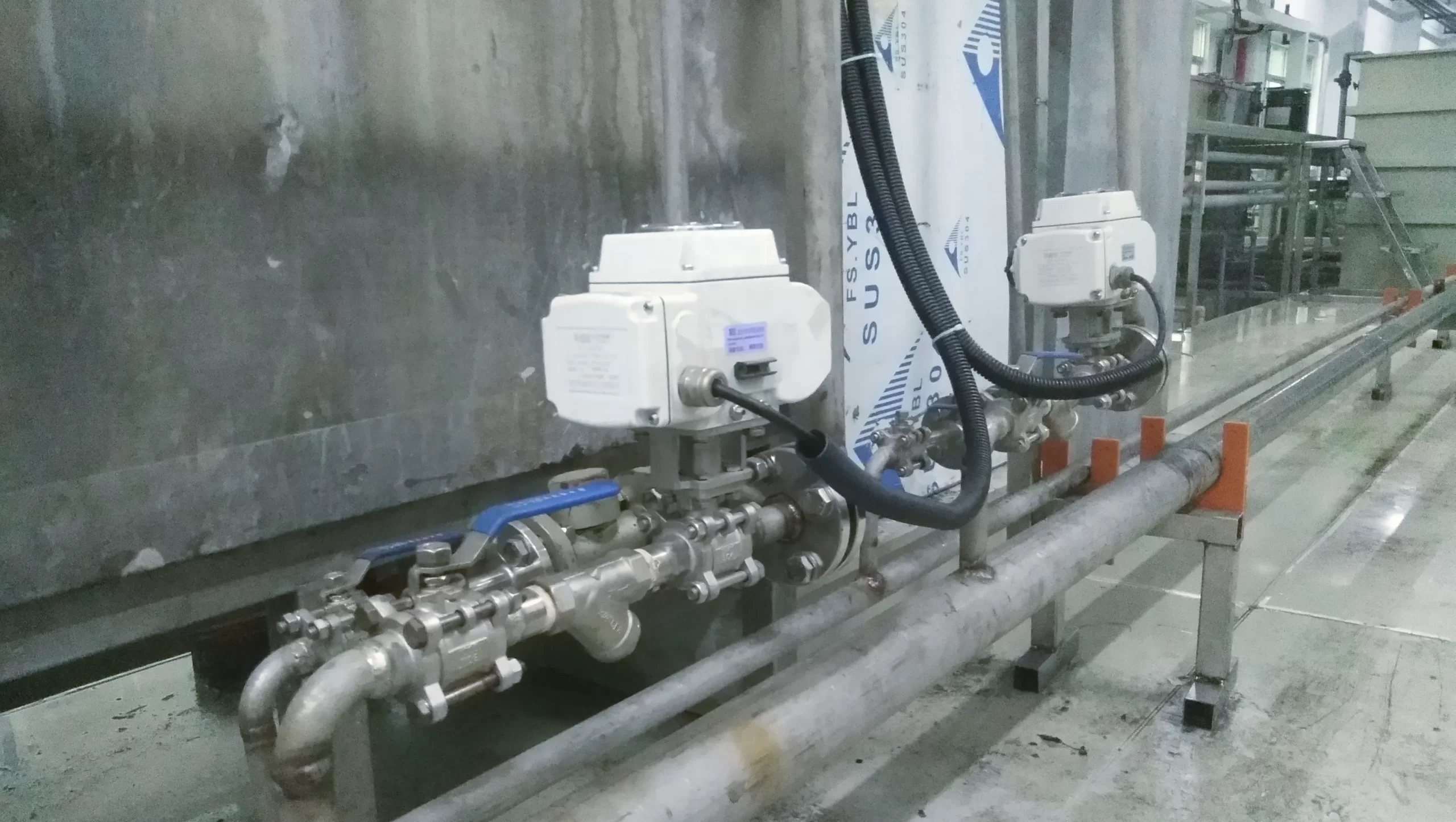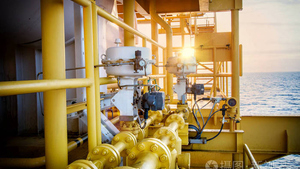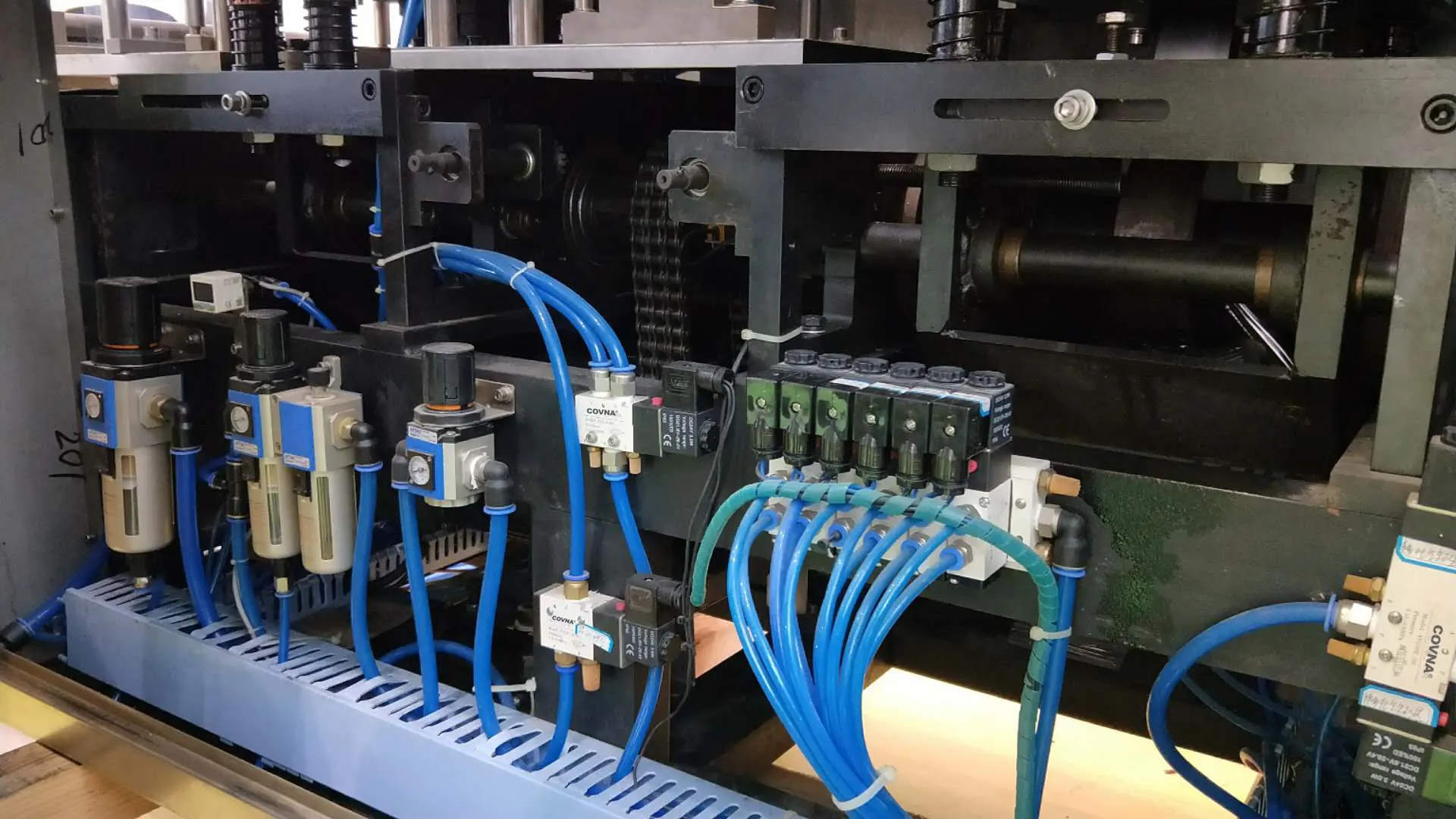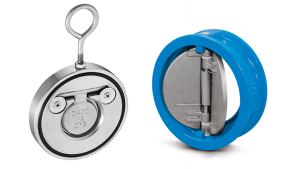General Introduction to diaphragm valves:
The diaphragm valve is a shut-off valve that uses a diaphragm as an opening and closing part to close the flow path, cut off the fluid, and separate the inner cavity of the valve body from the inner cavity of the valve cover. The diaphragm is usually made of rubber, plastic and other elastic, corrosion-resistant and impermeable materials. The valve body is mostly made of plastic, glass fiber reinforced plastic, ceramic or metal rubber-lined materials. Simple structure, good sealing and anti-corrosion performance, and low fluid resistance. Used in low pressure, low temperature, strong corrosive and medium containing suspended matter. According to the structure, there are roof type, cut-off type, gate type and so on. According to the driving mode, there are manual, pneumatic and electric.
The structure of the diaphragm valve is quite different from the general valve. It is a new type of valve and a special form of cut-off valve. Its opening and closing part is a diaphragm made of soft material, which connects the internal cavity of the valve with the valve. The inner cavity of the cover and the driving part are separated and are now widely used in various fields. Commonly used diaphragm valves include rubber-lined diaphragm valves, fluorine-lined diaphragm valves, unlined diaphragm valves, and plastic diaphragm valves.
Diaphragm valve is equipped with a flexible diaphragm or combined diaphragm in the valve body and valve cover, and its closing part is a compression device connected with the diaphragm. The valve seat can be weir-shaped, or it can be a pipe wall that passes through the flow channel. The advantage of the diaphragm valve is that its operating mechanism is separated from the medium passage, which not only ensures the purity of the working medium, but also prevents the possibility of the medium in the pipeline from impacting the working parts of the operating mechanism. In addition, there is no need to use any form of separate seal at the valve stem, unless it is used as a safety device in the control of hazardous media. In the diaphragm valve, since the working medium is only in contact with the diaphragm and the valve body, both of which can use a variety of different materials, the valve can ideally control a variety of working media, especially suitable for chemically corrosive or suspended particles medium. The working temperature of the diaphragm valve is usually limited by the materials used in the diaphragm and valve body lining, and its working temperature range is approximately -50 to 175°C. The diaphragm valve has a simple structure and consists of only three main parts: the valve body, the diaphragm and the valve head assembly. The valve is easy to quickly disassemble and repair, and the replacement of the diaphragm can be completed on site and in a short time.
Working Principle and its stucture:
The diaphragm valve uses a corrosion-resistant lining body and a corrosion-resistant diaphragm instead of the valve core assembly, and the movement of the diaphragm is used for adjustment. The body material of the diaphragm valve is cast iron, cast steel, or cast stainless steel, and is lined with various corrosion-resistant or wear-resistant materials, diaphragm material rubber and polytetrafluoroethylene. The lining diaphragm has strong corrosion resistance and is suitable for the adjustment of strong corrosive media such as strong acid and strong alkali.
The diaphragm valve has a simple structure, low fluid resistance, and a larger flow capacity than other types of valves of the same specification; it has no leakage and can be used for the adjustment of high viscosity and suspended particles. The diaphragm isolates the medium from the upper cavity of the valve stem, so there is no packing medium and no leakage. However, due to the limitation of diaphragm and lining material, the pressure resistance and temperature resistance are poor, and it is generally only suitable for 1.6MPa nominal pressure and below 150°C.
The flow characteristic of the diaphragm valve is close to the quick opening characteristic, which is approximately linear before 60% of the stroke, and the flow after 60% does not change much. Pneumatic diaphragm valves can also be equipped with feedback signals, stoppers and positioners to meet the needs of automatic control, program control or flow adjustment. The feedback signal of the pneumatic diaphragm valve adopts non-contact sensing technology. This product uses a membrane type propulsion cylinder instead of a piston cylinder, eliminating the disadvantages of easy damage to the piston ring, causing leakage and inability to push the valve to open and close. When the air source fails, the handwheel can still be operated to open and close the valve.
The sealing principle of diaphragm valve:
The sealing principle of the diaphragm valve is to rely on the downward movement of the operating mechanism to press down the diaphragm or the diaphragm assembly and the channel of the weir-type lining valve body or the straight-through lining valve body to achieve sealing. The specific pressure of the seal is achieved by the downward pressure of the closing member. Since the valve body can be lined with various soft materials, such as rubber or polytetrafluoroethylene; the diaphragm is also made of soft materials, such as rubber or synthetic rubber lined polytetrafluoroethylene, so it can be achieved with a smaller sealing force Completely sealed.
Diaphragm valves have only three main parts: body, diaphragm and bonnet assembly. The diaphragm separates the inner cavity of the lower valve body from the inner cavity of the upper valve cover, so that the valve stem, valve stem nut, valve clack, pneumatic control mechanism, electric control mechanism and other parts located above the diaphragm do not contact with the medium, and no medium is generated. External leakage saves the sealing structure of the stuffing box.
Where the diaphragm valve is applicable:
Diaphragm valve is a special form of shut-off valve. Its opening and closing part is a diaphragm made of soft material, which separates the inner cavity of the valve body from the inner cavity of the valve cover.
Due to the limitation of valve body lining process and diaphragm manufacturing process, larger valve body lining and larger
Diaphragm manufacturing processes are difficult, so diaphragm valves are not suitable for larger pipe diameters, and are generally used in pipelines ≤DN200.
Due to the limitation of diaphragm material, diaphragm valve is suitable for low pressure and low temperature occasions. Generally do not exceed 180°C. Because diaphragm valves have good anti-corrosion properties, they are generally used in corrosive media devices and pipelines. Because the operating temperature of the diaphragm valve is limited by the applicable medium of the diaphragm valve body lining material and diaphragm material
Structure classification:
Diaphragm valves can be divided into six types according to the structure: house type, DC type, cut-off type, straight-through type, gate type and right-angle type; the connection form is usually flange connection; according to the driving mode, it can be divided into three types: manual, electric and pneumatic , The pneumatic drive is divided into three types: normally open, normally closed and reciprocating.
Installation and maintenance:
①Before installing the diaphragm valve, carefully check whether the operating conditions of the pipeline are consistent with the scope of use specified by this valve, and clean the inner cavity to prevent dirt from jamming or damaging the sealing parts.
②Do not brush grease or oil on the rubber lining and rubber diaphragm surface to prevent the rubber from swelling and affecting the service life of the diaphragm valve.
③The hand wheel or transmission mechanism is not allowed to be used for lifting, and collision is strictly prohibited.
④ When manually operating the diaphragm valve, do not use auxiliary levers to prevent excessive torque from damaging the drive components or sealing parts.
⑤Diaphragm valves should be stored in a dry and ventilated room. Stacking is strictly prohibited. Both ends of the stock diaphragm valve must be sealed, and the opening and closing parts should be slightly open.
Fault elimination:
| Possible failure | Reason | Solution |
| Handwheel operation is not flexible | 1. Bent stem
2. Thread damage |
1. Replace the valve stem 2. Trim the thread and add lubricant
|
| Pneumatic diaphragm valve cannot open and close automatically |
1. Air pressure is too low 2. The spring top tightening force is too large 3. The rubber diaphragm is damaged |
1. Increase the air supply pressure
2. Reduce spring top tightening force 3. Replace the diaphragm |
| Leakage at the junction of valve body and bonnet |
1. Loose connecting bolts 2. Broken rubber layer in the valve body |
1. Tighten the connecting bolts
2. Replace the valve body |
Main parts selection method:
Diaphragm valve parts are made of many materials, including ferrous metals and non-ferrous metals and their alloys of various brands, and various non-metallic materials. The materials of the diaphragm valve parts should be selected according to the following factors:
1. Operating conditions (pressure, temperature and characteristics of working medium).
2. The force of the part and its function in the diaphragm valve structure.
3. Good manufacturability.
4. If the above conditions are met, there must be a lower cost.
The material of the valve body, bonnet and disc (disc): the body, bonnet and disc are one of the main parts of the diaphragm valve, which directly bear the pressure of the medium. The materials used must meet the “pressure and temperature grade of the diaphragm valve” Stipulate
--- END ---




